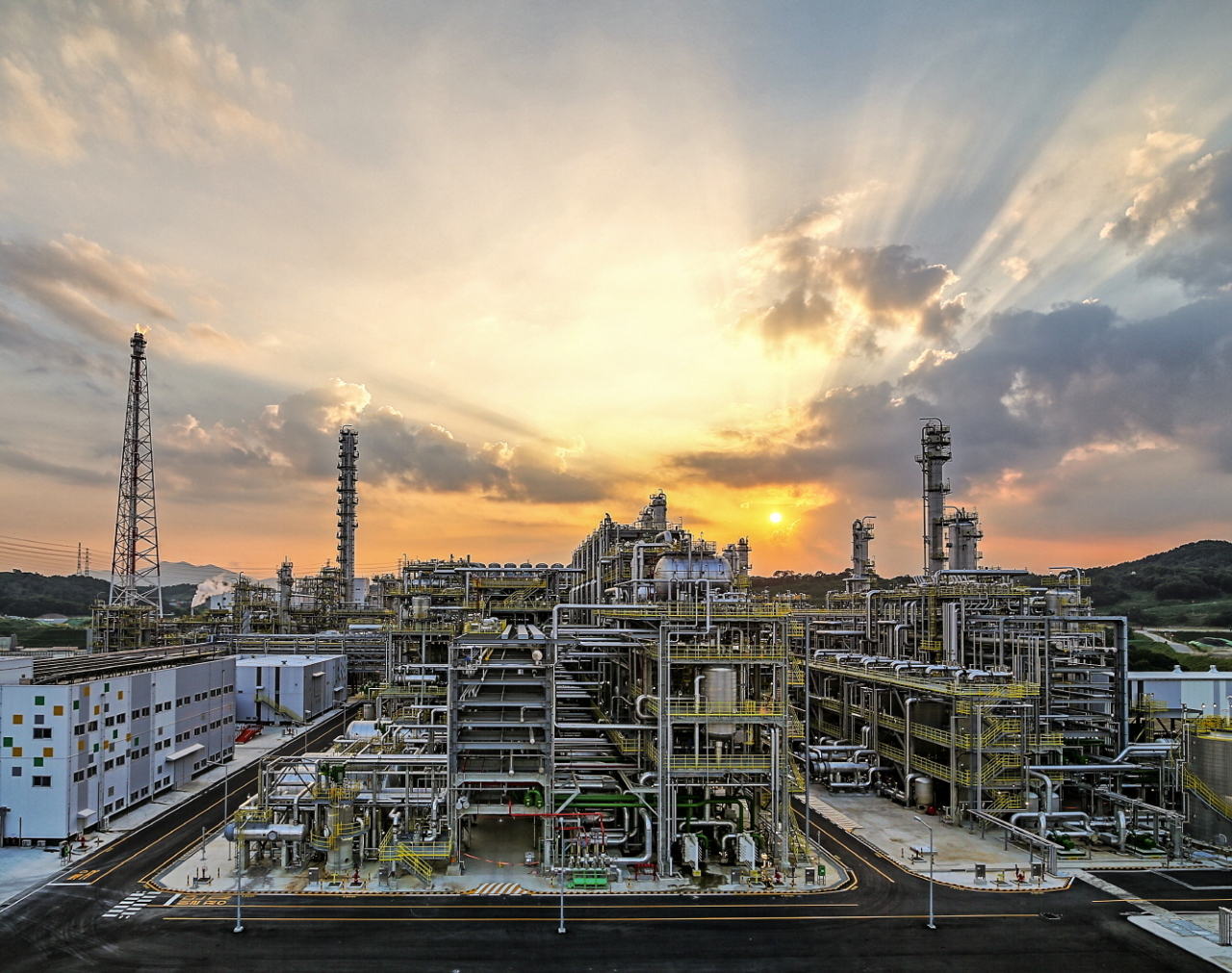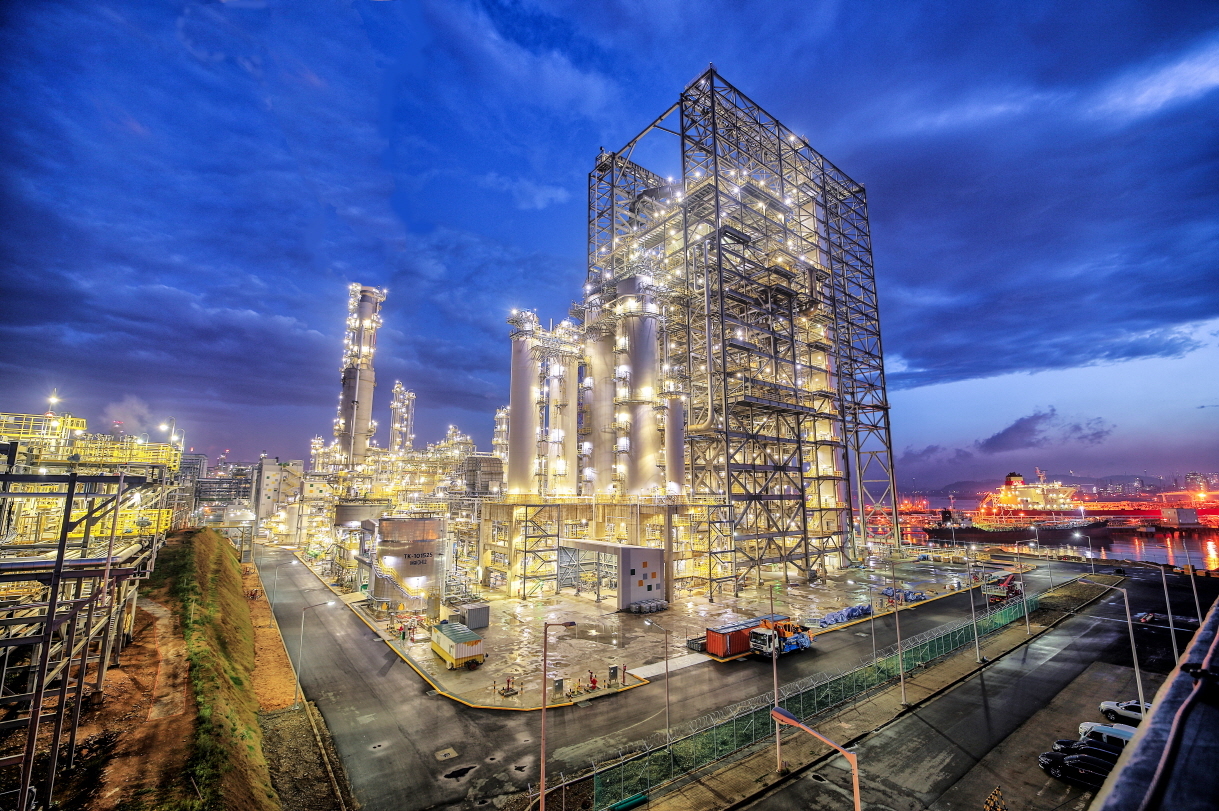S-Oil is slated to hold an inauguration ceremony Wednesday to celebrate the successful completion and beginning of operations of its residue upgrading complex and olefin downstream complex, or RUC and ODC, built at a cost of 5 trillion won ($4.3 billion).
The RUC/ODC project, which began operations in November last year, relies on low-value residue oil as feedstock to produce high-value petrochemical products.
 |
S-Oil’s olefin downstream complex in Onsan, Ulsan (S-Oil) |
“We believe increased production capacity of high-value products through the mega-scale project gives a more balanced business portfolio to the company across fuel, lube and petrochemical businesses,” S-Oil said.
The project is also expected to provide a critical foothold to expand further into olefin downstream at the same time.
The size of the new refinery is 485,000 square meters in total -- about the size of 68 football stadiums. It used 110,000 tons of steel frame, or enough to build 11 Eiffel Towers. The project also required 2,100 kilometers of pipeline, which is equivalent to the distance between the Ulsan refinery and Hong Kong. It used electric communication wiring as long as 8,200 kilometers.
S-Oil built the country’s largest plant module for the residue upgrading complex as big as a 16-story apartment and as heavy as 3,400 tons -- the weight of 2,300 midsize automobiles. The module was transported using sea and land routes for five days for installation, according to S-Oil.
Over a 36-month period -- July 2015 to June 2018 -- of construction, the RUC/ODC project contributed to job creation and economic growth for Ulsan.
 |
S-Oil’s residue upgrading complex in Onsan, Ulsan (S-Oil) |
The new facilities created jobs for 4.5 million people based on an eight-hour workday. With the Daelim-Daewoo E&C consortium, around 300 construction, mechanical, equipment manufacturing, electricity, piping and heavy equipment contractors participated in the project, resulting in more than $1.3 billion worth of economic value for Ulsan, the company said. Five hundred new engineers and operators were recruited for the new units, and new jobs for maintenance and operation will continuously be created in the future.
Inside the RUC/ODC complex are four units: the residue hydro-desulfurization unit, high severity fluid catalytic cracking unit, propylene oxide plant and polypropylene plant.
The residue hydro-desulfurization unit involves a catalytic chemical process that uses hydrogen to remove sulfur and impurities in the residue, such as high-sulfur Bunker-C or asphalt, produced from the refining process of crude oil. This process produces feedstock for the downstream process of high severity fluid catalytic cracking.
The high severity fluid catalytic cracking unit is a core facility that produces gasoline and propylene from the desulfurized residue. Saudi Aramco, King Fahd University of Petroleum and Minerals and JX Nippon have developed the technology, and S-Oil was the first to commercialize it. The new, advanced technology has increased the yield of propylene to 25 percent, according to the company.
S-Oil’s propylene oxide plant boasts high cost efficiency, and its propylene oxide produced from the plant has successfully replaced imported propylene oxide, which meets about half of Korea’s demand. Propylene oxide is a key raw material for manufacturing polyurethane, which is used in applications such as cars, furniture and construction.
The polypropylene plant produces 405,000 tons of polypropylene in a year by polymerizing propylene from the residue upgrading complex and exports more than 70 percent of the products overseas. Polypropylene is harmless to humans, and some of its most significant properties are excellent chemical and water resistance. It is used in a variety of applications, including disposable syringes, transparent containers, nonwoven fabrics for hygienic purposes, packaging films, thermoses, medical devices, medical containers and bottles. S-Oil’s polypropylene is known for its excellent impact resistance and toughness, and has applications in the automotive industry, industrial applications and consumer goods.
By Shin Ji-hye (
shinjh@heraldcorp.com)









